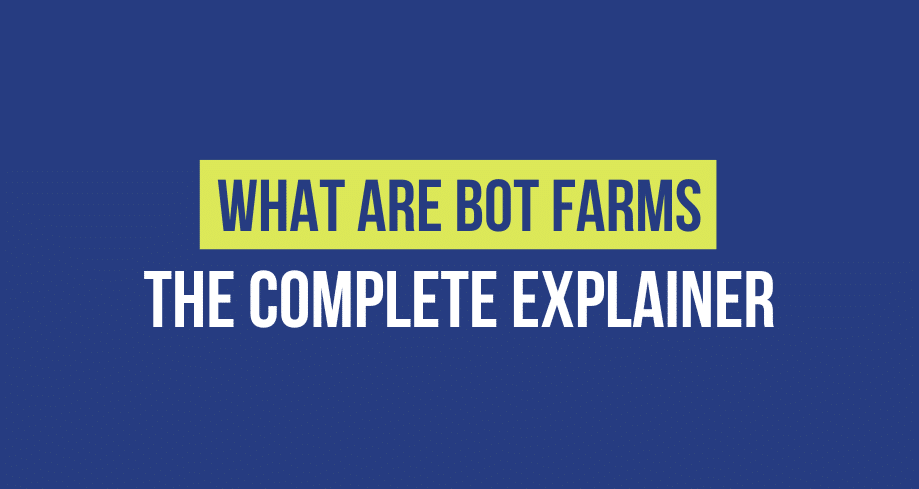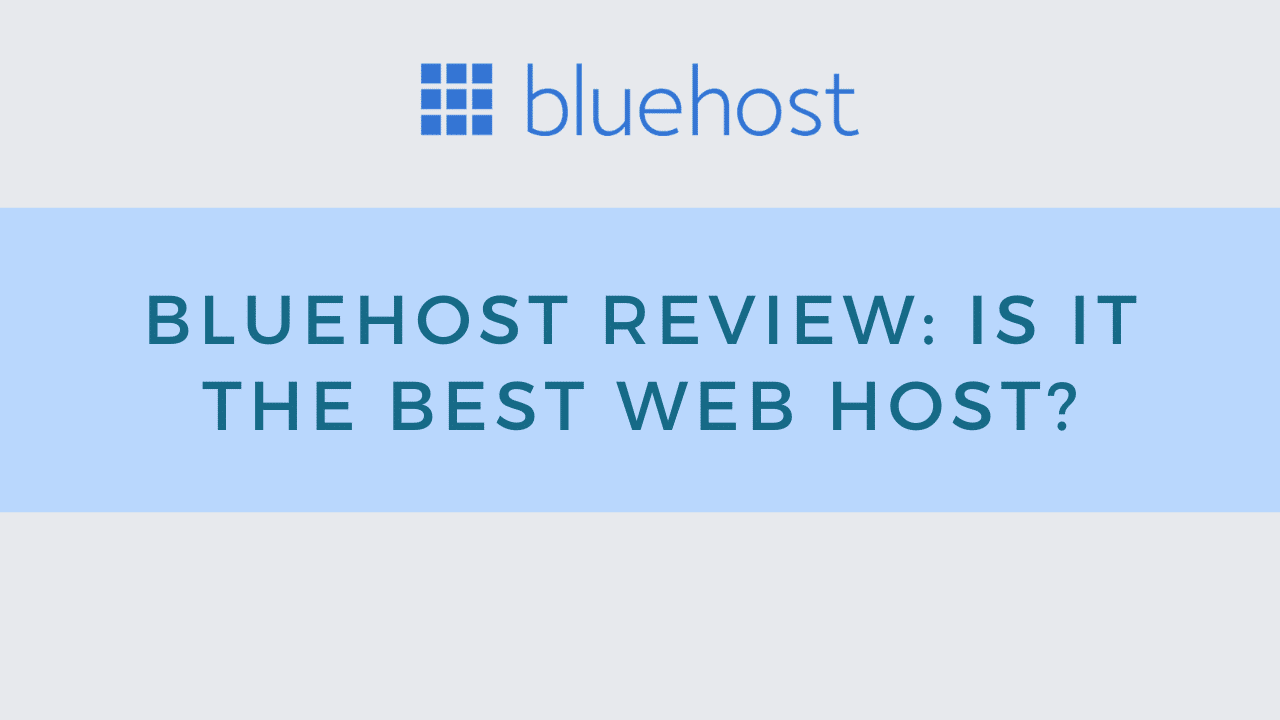The term “bot farms” has become increasingly prevalent and with good reason. Bot farms carry out automated actions or interactions online, often on a massive scale. These automated bots can significantly impact various online activities, ranging from social media platforms to digital advertising campaigns and data collection processes. As a result, there is a growing concern about the consequences of bot farms and the potential risks they pose to our online ecosystem.
Today, we will delve deeper into the concept of bot farms, exploring their functionalities, operational methods, and their impact on different aspects of online activities.
What are Bot Farms?
Bot farms are organized networks of automated bots programmed to perform various tasks online. These bots, also known as web robots or simply bots, are computer programs designed to imitate human actions and interactions on the internet. Bot farms have many of these bots working together to accomplish specific objectives.
The primary purpose of bot farms is to generate a high volume of automated actions or interactions online. These actions can range from simple tasks like clicking, liking, or following to more complex activities such as posting comments, sharing content, or even conducting transactions.
The functionality of bot farms relies on the automation of tasks through programming and scripting. The bots within the farm are programmed to execute specific actions based on predefined rules and algorithms. They can access websites, social media platforms, online forums, and other online spaces to perform their assigned tasks.
They could be involved in the following:
- Google ads
- Internet traffic manipulation
- click fraud software
- PPC ads
- bot farming
Types of Bot Farms
Social Media Bot Farms
Social media bot farms are specifically designed to manipulate social media platforms by generating automated actions and interactions. These farms employ bots to perform tasks such as liking, following, commenting, and sharing content. Social media bot farms aim to create an illusion of popularity and influence by artificially inflating follower counts, engagement metrics, and trending topics.
The implications of social media bot farms are significant. One of the main consequences is the proliferation of fake followers and engagement. Accounts associated with bot farms may appear as genuine users, leading to distorted metrics and undermining the credibility of social media platforms. Fake engagement can mislead users, affect brand reputation, and skew data analytics.
Ad Fraud Bot Farms
Ad fraud bot farms are focused on engaging in fraudulent activities within the digital advertising ecosystem. These farms deploy bots to generate fake clicks, impressions, and conversions, deceiving advertisers and siphoning off advertising budgets. Ad fraud bot farms exploit vulnerabilities in advertising networks and platforms to maximize their fraudulent gains.
The impact of ad fraud bot farms on digital advertising campaigns is substantial. Advertisers may unknowingly pay for non-existent or artificially inflated engagement, leading to wasted resources and compromised campaign effectiveness.
Ad fraud undermines the integrity of digital advertising, erodes trust among advertisers, and reduces the return on investment (ROI) for legitimate marketing efforts. It also hampers the sustainability of the digital advertising industry by diverting resources away from genuine advertisers.
Data Harvesting Bot Farms
Data harvesting bot farms primarily collect and harvest data from websites, online forms, and other digital platforms. These farms employ bots to systematically crawl and scrape data, often without the knowledge or consent of users. The gathered data can include personal information, browsing habits, preferences, and other sensitive details.
The role of data harvesting bot farms in data collection raises significant concerns regarding privacy and security. The collected data may be used for various purposes, including building detailed user profiles, selling to third parties, or deploying targeted marketing campaigns. Data harvesting bot farms can compromise individuals’ privacy, lead to identity theft, and enable malicious actors to exploit sensitive information.
How Bot Farms Operate
Bot Farm Infrastructure
Bot farms require specific infrastructure and setup to operate effectively. This infrastructure typically involves multiple devices, IP addresses, and proxies. Using these components helps bot farms mimic human behavior, evade detection, and carry out their activities at scale.
- Multiple Devices: Bot farms often utilize a network of devices, including computers, servers, or even IoT devices, to distribute the workload and increase efficiency.
- IP Addresses: Bot farms frequently employ multiple IP addresses to mask their activities and avoid detection. By using different IP addresses, they can appear as distinct users and avoid being identified as a single entity.
- Proxies: Bot farms also utilize proxies to conceal their true identities further. Proxies act as intermediaries between the bot farm and the targeted platforms, masking the bot farm’s IP addresses. Proxies allow the bot farm to distribute its actions across various IP addresses, making it harder for platforms to identify and block their activities.
Bot Farm Techniques
- Account Creation and Management: Bot farms employ automated techniques for creating and managing multiple accounts across various online platforms. These techniques involve using scripts and algorithms to generate account details, including usernames, passwords, profile information, and profile pictures.
- Automated Actions and Interactions: Bot farms rely on automated actions and interactions to achieve their objectives. These actions include liking posts, following users, commenting on content, and sharing links or media. Bot farms can execute these actions incredibly rapidly, surpassing what is achievable by human users.
The potential impact of these automated interactions on online ecosystems is significant. They can distort engagement metrics, skew trending topics, and manipulate content visibility.
Impact of Bot Farms
Social Media Manipulation
Social media bot farms have negative consequences beyond artificially inflating engagement metrics. One significant impact is the spread of misinformation and fake news. Bot farms can amplify specific narratives, manipulate trending topics, and influence public opinion by generating a significant volume of automated interactions.
This manipulation erodes the credibility of social media platforms as reliable sources of information and undermines the trust users place in them. It becomes increasingly challenging for users to differentiate between genuine content and artificially inflated or manipulated content.
Additionally, social media bot farms contribute to the creation of echo chambers and filter bubbles, where users are exposed only to information that aligns with their existing beliefs.
Ad Fraud and Revenue Loss
Ad fraud bot farms engage in various fraudulent activities within the digital advertising ecosystem. They generate fake clicks, impressions, and conversions, tricking advertisers into paying for non-existent or inflated engagement.
Ad fraud bot farms exploit vulnerabilities in ad networks, programmatic advertising systems, and other advertising platforms to carry out their activities. By manipulating metrics and misrepresenting the reach and impact of advertising campaigns, these bot farms deceive advertisers into allocating budgets toward fraudulent activities instead of genuine user engagement.
The financial impact of ad fraud extends beyond individual advertisers. It affects the entire digital advertising industry by reducing trust among advertisers, driving up advertising costs, and impeding the growth of legitimate advertising practices. Advertisers may become hesitant to invest in digital advertising due to concerns about their campaigns’ reliability and return on investment (ROI).
Data Privacy and Security Concerns
Data harvesting bot farms raise significant data privacy and security concerns. These farms systematically collect and harvest data from websites, online forms, and other digital platforms, often without the knowledge or consent of users. This threatens individuals’ privacy and can lead to the misuse or unauthorized sharing of personal information.
The collected data can be exploited in various ways, including building detailed user profiles, selling to third parties, or conducting targeted marketing campaigns. Individuals may become targets of identity theft, phishing attacks, or other forms of cybercrime due to their data being harvested by bot farms.
Combating Bots
Platform Measures
Platforms have implemented various strategies and measures to detect and combat bot traffic from bot accounts effectively. These measures aim to identify and mitigate bot farms’ activities, protecting the platform’s integrity and enhancing the user experience. Key strategies include:
- Advanced Detection Systems: Platforms deploy sophisticated algorithms and machine learning models to detect patterns associated with bot farm activities. These systems analyze user behavior, engagement metrics, and other data points to identify suspicious or automated actions.
- Behavioral Analysis: Platforms employ behavioral analysis techniques to differentiate between genuine user behavior and automated actions. Machine learning algorithms analyze various parameters such as account creation patterns, engagement patterns, and interaction with other users to identify anomalies and patterns associated with bot farms.
- Captcha and Verification: Platforms implement Captcha tests and verification processes to ensure that users engaging with the platform are genuine individuals and not automated bots. These tests require users to complete tasks that are challenging for automated systems to perform accurately.
Legal Actions and Regulations
Legal actions and regulations have been introduced to tackle bot farms and their activities. Governments and regulatory bodies have recognized the need to address the challenges posed by bot farms and their negative impact on online ecosystems. Key steps taken include:
- Anti-Fraud Laws: Existing fraud, deceptive practices, and cybercrime laws are leveraged to prosecute individuals or entities involved in bot farm operations. Legal actions can include fines, penalties, and even imprisonment for those found guilty of engaging in illegal activities through bot farms.
- Digital Advertising Regulations: Regulatory bodies and industry organizations have established guidelines and standards to combat ad fraud and protect advertisers from bot farm activities. These regulations often require transparency in ad networks, verification processes, and adherence to best practices in digital advertising.
- Data Privacy Regulations: Data protection and privacy regulations, such as the General Data Protection Regulation (GDPR), aim to safeguard individual’s personal information and ensure responsible data collection and usage.
- Platform Policies and Terms of Service: Platforms have implemented stricter policies and terms of service to prohibit the use of bot farms and automated activities. By explicitly stating the consequences and penalties for engaging in bot farm operations, platforms discourage these activities and provide a clear framework for enforcement.
Frequently Asked Questions
What are bot farms, and how do they work?
Bot farms are networks of automated computer programs, known as bots, designed to perform various online actions. These actions can include creating and managing multiple accounts, generating fake engagement on social media, carrying out ad fraud activities, or harvesting data from websites. Bot farms often utilize multiple devices, IP addresses, and proxies to mimic human behavior, evade detection, and operate at scale.
Why are bot farms a concern?
They can manipulate social media platforms by creating an illusion of popularity, spreading misinformation, and distorting engagement metrics. Ad fraud bot farms deceive advertisers by generating fraudulent clicks, impressions, and conversions.
How do platforms detect and combat bot farms?
Platforms employ various strategies to detect and combat bot farms. These include advanced detection systems that analyze user behavior, engagement patterns, and other data points to identify suspicious activities.
Conclusion
Combating bot farms requires a multi-faceted approach involving technological advancements, industry collaboration, legal actions, and regulatory measures. Combining platform measures with legal actions and regulations makes it possible to deter bot farm operators, protect users and advertisers, and maintain the integrity of online ecosystems.




